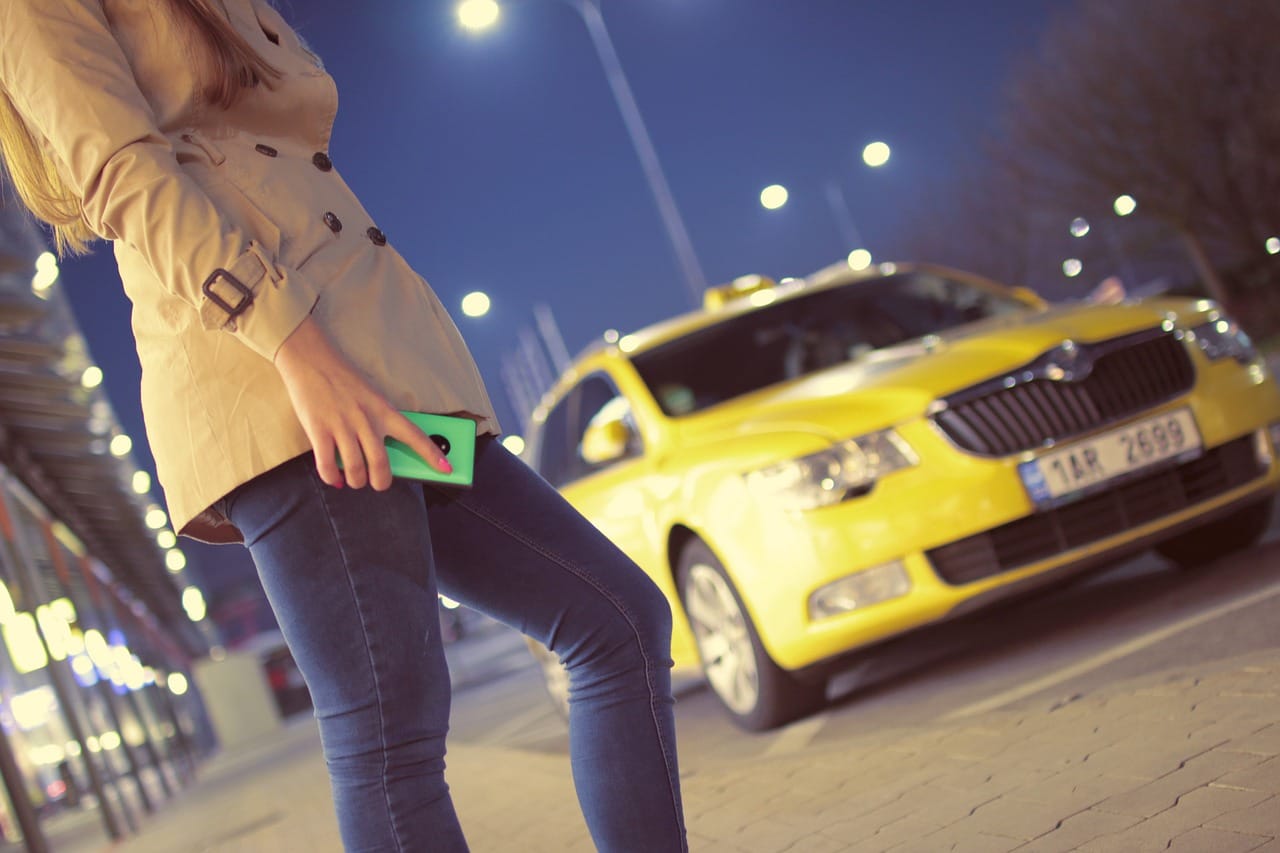Which is better: Uber or Lyft?

The transportation landscape has changed drastically over the years. With the ubiquitousness of smartphones and the apps they power, competition for your ride dollar has flooded the marketplace. Increase in competition brings an increase in the quality of service and a decrease in cost for the consumer. But the consumer is also faced with a dilemma – which app is going to provide the best service at the best price?
In the past we used to hail a cab after a night out or call one for a ride home from the airport. This was always an easier option if you live in a big city, but with our smartphones now you can get a ride to and from almost anywhere at any time.
Let’s take a look at the differences between the two rideshare giants – Uber and Lyft. Then Based on the information below you can decide which is better for your own needs. That way, you can make a more informed decision about which app you use to get you where you need to go.
The history
The story of Lyft dates back to 2007 as a side project for Zimrides – a rideshare matching platform for people looking to carpool long distances. Lyft launched its app in 2012 and by that time Uber had already been on the market for nearly 3 years and was making quite a name for itself.
Uber was founded in San Francisco in 2009 and the Uber app was developed in 2010. In 2011, Uber expanded to New York City and Paris. While Lyft may have come up with and started developing the concept first, Uber was quicker to put it into practice.
Branding
Uber initially focused its brand image on trying to attract business people. They put an emphasis on the more high-end and prestigious cars called Uber Black. They encouraged their drivers to act in a professional, business-like manner. More recently they have transitioned to more of a lifestyle brand, which attracts a broader audience of drivers and riders.
Lyft typically tries to present itself as a more casual, friendly ride-hailing company. This is reflected in their slogan, “Your Friend With a Car.”
It is worth noting that there are more people using Uber than Lyft – not to mention that Uber is worldwide while Lyft only operates in North America. Uber has expanded its reach even further now by adding UberEats, giving their driver’s another option to earn, and they recently acquired Postmates further expanding their reach in the market.
Who’s driving?
Many rideshare drivers who use these platforms are not exclusive to one or the other. While each individual driver may have his or her preference, in most cases drivers are registered with both apps. As a rider, you may take an Uber one week, then the next week go on a Lyft ride and find yourself in the same car, taking the same route with the same driver behind the wheel.
Uber and Lyft are merely apps that connect drivers with people in need of a ride. They provide customer support, logistical support, and they facilitate payment. The two services are easy to sign up for. However, rideshare drivers who have signed up for both report that Lyft was much quicker in accepting their application..
Both Uber and Lyft, however, conduct background checks on the drivers who use their apps. The standards applied vary from state to state or region to region.
Requirements to drive for Uber
Minimum age – To be an Uber driver, you must meet the legal age requirement of the city you drive in. In most states you have to be at least 21 to apply to be a driver.
Driving history – You must have a minimum of one year of licensed driving experience – or 3 years if you are under 23 years old.
Background check – Convictions for or pending charges of violent offenses, sexual offenses, or terrorism-related offenses will disqualify an applicant for working with Uber.
Requirements to drive for Lyft
Minimum age – The minimum age requirement to drive with Lyft ranges from 21–25 years old, depending on the state.
Driving history – Some states require additional years of driving history, especially for younger drivers, but overall to be eligible to drive for Lyft you must have had your license for at least 1 year.
Background check – You may be not eligible to drive for Lyft if you have been convicted of driving under the influence within the past 7 years; if you have been convicted of a violent crime or sexual offense; or have been convicted of a fraud-related offense, a drug-related offense, or a property-damage related offense within a given timeframe that varies according to regional jurisdictions.
To compare Uber with Lyft from the perspective of a driver, check out this thorough article on driving for both Uber and Lyft.
What are they driving?
Both Lyft and Uber have requirements for the kinds of vehicles drivers use. Additionally, they offer their users different ride experience options which have their own vehicle standards to meet as well.
Additionally, Uber and Lyft have their own car rental platform that operates in a similar way as HyreCar, but they do not allow for drivers to work with multiple services and only offer weekly rentals as a minimum duration.
Vehicle requirements for Uber
To drive for Uber, your vehicle must have at least 4 doors and be able to transport a minimum of 4 passengers. The vehicle must not be any older than 15 years and cannot have any cosmetic damage such as large dents or missing pieces, and it cannot have any commercial branding or advertising paint jobs. Check out our state vehicle requirements article here.
While most drivers use their everyday car, other drivers prefer to use a car that they do not own- for example, by renting a car with HyreCar. This helps them avoid the cost of depreciation of the car’s value with the extra usage.
Depending on your vehicle, you could be eligible for one or several of Uber’s other products:
Uber X – Standard option that offers affordable rides for passengers
UberPool – Carpooling service. The vehicle must seat up to 4 passengers
UberXL – SUVs that seat up to 6 people
UberComfort – newer cars with extra legroom
Uber Black – high-end luxury vehicles that seat up to 4 passengers
Vehicle requirements for Lyft
To drive for Lyft, your vehicle must have four doors and a minimum of five seat belts – including the front seat. The age and condition of the vehicle vary from state to state.
Lyft does not allow certain subcompact models. Check out this article for a list of subcompact vehicles Lyft does not allow.
Depending on your vehicle, you could be eligible for one or several of Lyft’s other services:
Lyft: Standard Lyft car for up to 4 riders.
Lyft Shared: Passengers can share a car with riders headed in the same direction at a discounted price.
Preferred: Only offered for top-rated drivers in a newer, spacious car.
Lyft XL: Cars that fit for up to 5 passengers.
How does the Uber app and Lyft app work for drivers?
When you sign up to be a driver with the Lyft app you will also start the Lyft background check. Once your application is approved you will receive a welcome kit.The kit includes a Lyft emblem that should be displayed in the bottom-right corner of your windshield, as well as a ‘getting started’ manual.
When you are ready to start giving rides, you simply log in to the app and slide the steering wheel icon to the right to start receiving ride requests. When a ride request comes in, you’ll get a notification with the client’s name, pickup time, and ride type. You’ll have 15 seconds to accept the request before it is sent to another driver.
The Uber app works in much the same way. You go online when you want to receive ride requests. You are sent requests and can accept or decline them as you wish. It’s worth noting that having a low request acceptance rate could impact you getting requests in the future, and it could limit your eligibility for bonuses.
Both Uber and Lyft are constantly looking for new ways to improve the experience for their drivers. They have recently taken measures to make tipping easier and a more prominent feature for the rider, and as a way to incentivize new drivers, they have adjusted their pay scale which has resulted in a reported increase in drivers’ earnings.
Though Uber has made several rate cuts, the increase in earnings could be due to an increase in usage of the app. So, while a driver may not make as much for one fare as they did 3 years ago, their overall earnings have gone up due, in part, to an increase in rides and an increase in bonuses and surge pricing for operating in times of high demand.
How the app works for riders
Both Lyft riders and Uber riders report a similar positive user experience. The respective apps are simple and easy to use. You simply enter your starting point or pickup location and your destination and you are given driver options, their expected time of arrival and estimated price. Once you have confirmed your choice, the app will notify you when the driver is nearby
Payment is done automatically through the ridesharing app so there is never a need to exchange money with the driver.
While both ridesharing apps are quite similar and offer essentially the same service, there are a few small to major differences.
Uber caters more to business people. Their app is more intuitive when it comes to scheduled rides and they offer a few more options in terms of the type of car they can provide.
Lyft is more transparent and straightforward in terms of its pricing. Understanding how Uber comes up with its price can be challenging at times.
Which app offers the cheapest ride option?
The average cost varies from city to city, what kind of car, how many drivers are currently working, and, especially, when the ride is requested. There are too many variables to give a clear and definitive answer. But when users from the same city are polled and the data is collected, there isn’t much difference in price – and, if there is one, it seems to be minimal.
Most riders use both apps and make their selection according to the nearby drivers and the options that are available to them at that specific time. Uber passengers are also Lyft passengers, and vice-versa.
Recent driver shortages have raised prices for riders. Prices have increased significantly due to this high demand from riders and and lower supply of drivers. Of course, in larger metro areas you can also expect a premium rate during peak hours.
Frequent rider subscription plans
Uber Pass
Uber offers its loyal customers a special subscription plan known as Uber Pass. For $25 a month, users with this subscription plan benefit from priority airport pickups, a 10% reduction on certain economy rides and a 15% reduction on certain premium rides, free Uber Eats deliveries on orders that meet a certain minimum, and other perks.
Lyft Pink
Lyft offers its frequent riders a special subscription plan known as Lyft Pink. The subscription plan only costs $19.99 a month. It gives users a 15% discount on all rides, unlimited bike rentals, free scooter rentals, a free Grubhub+ membership and priority airport pickups.
Takeaway
While some users prefer Lyft services and others prefer Uber, the overwhelming majority of both riders and drivers use both, depending on the availability and options at a given time. There is quite a lot of competition in this relatively new industry, and both companies are constantly tweaking their product and their service to gain an edge over their competitors.
If you’re looking to compare Uber vs Lyft, your best bet is to use them both. That way you’ll have more options and, especially during peak usage times, there can be quite a difference in price.



